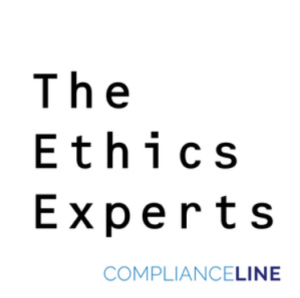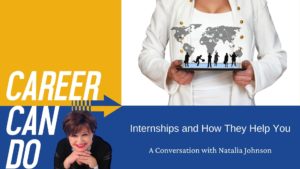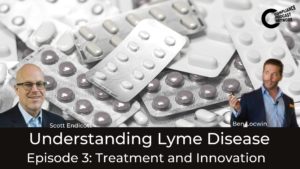What do all these new decisions from the Delaware courts mean. They certainly mean the Delaware courts will be much more scrutinizing of Caremark claims going forward. The evolution of decisions from Marchand to Boeing shows that a company must have robust compliance and risk management oversight in place but more importantly engage in oversight for the company’s signature risk(s). Boards must do so aggressively not passively.
In Marchand, the Court found a Board must assess the risk profile of the company and manage the most critical risks all the way up to the Board level. At Blue Bell Ice Cream, it was food safety. At Boeing it is airline safety. At the Boeing Board, there was “no committee charged with direct responsibility to monitor airplane safety. While the Audit Committee was charged with “risk oversight,” safety does not appear in its charter. Rather, its oversight function was primarily geared toward monitoring Boeing’s financial risks.” This lack provided the basis for a Caremark claim as further refined by Marchand, et al.
The Clovis decision is another steppingstone in the creation of duties for a Board regarding compliance. Like the Board at Blue Bell Ice Cream, the Clovis Oncology Board had but one compliance obligation. At Blue Bell Ice Cream, it was food Safety. At Clovis Oncology it was compliance around the clinical trials and reporting results of its signature product, the drug Roci. While Blue Bell Ice Cream management did not even report its food safety results to the Board, senior management at Clovis made material misrepresentations to the Board about the results of the clinal trial based upon the melding of unconfirmed results with confirmed results. This case then stands for the proposition that a Board must do more than simply accept what management says about compliance, it must monitor compliance. Here the Clovis management made material misrepresentations to the Board about the results of the clinal trial based upon the melding of unconfirmed results with confirmed results.
In Hughes, the director consciously failed to establish a system of oversight for financial statements and related-party transactions, “choosing instead to rely blindly on management while devoting patently inadequate time to the necessary tasks.” An Audit Committee can rely in good faith upon reports by management and other experts. In doing its job, the members of an Audit Committee will necessarily rely on management. But Caremark envisions some degree of board-level monitoring system, not blind deference to and complete dependence on management. The board is obligated to establish information and reporting systems that “allow management and the board, each within its own scope, to reach informed judgments concerning both the corporation’s compliance with law and its business performance.”
Finally, the Board never established its own reasonable system of monitoring and reporting, choosing instead to rely entirely on management. There were no Board meeting minutes to support the company’s rebuttals. As the Court noted, “The absence of those documents is telling because “[i]t is more reasonable to infer that exculpatory documents would be provided than to believe the opposite: that such documents existed and yet were inexplicably withheld.”” The documents that the Company produced indicated that the Audit Committee never met for longer than one hour and typically only once per year. Each time they purported to cover multiple agenda items that included a review of the Company’s financial performance in addition to reviewing its related-party transactions. On at least two occasions, they missed important issues that they then had to address through action by written consent. Clearly, the Board was not fulfilling its oversight duties.
At Boeing, there was several areas where the Board had oversight but it had none for safety. Moreover, there was no Board monitoring system in place for safety. There was no mechanism to get whistleblower complaints about safety to the Board. Finally there was no independent evaluation by the Board on safety, “when safety was mentioned to the Board, it did not press for further information, but rather passively accepted management’s assurances and opinions.”
have called this new category of risk “corporate trauma” and added, “But the ruling nevertheless reconfirms the courts’ increasing willingness to subject directors to suit for corporate trauma.” Mike Volkov was more succinct noting, “At bottom, the Chancery Court is raising the stakes on board member accountability.”
The Hughes Court further delineated a Board’s obligations under Caremark. It cannot simply have the trappings of oversight, it must do the serious work required and have evidence of that work (Document, Document, and Document). Marchand required Boards to manage the risks their organizations face. Clovis Oncology requires ongoing monitoring by the Board. Hughes stands for the proposition that have the structures, policies and procedures in place is not enough. The Board must fully engage in oversight of a compliance program. The decision in Boeing is yet a further expansion of Caremark, once again through Marchand. It stands for the proposition that a company must assess its risks and then manage those risks right up through the Board level. Moreover, the must be aggressive in their approach and not simply passively taking in what management has presented to them.
Day: November 17, 2021
Welcome to the Great Women in Compliance Podcast, co-hosted by Lisa Fine and Mary Shirley.
Michelle Dewarrat has been incorporating corporate social responsibility into her Compliance program long before many of us started bandying about the term ESG. As today’s guest, Mary seeks Michelle’s advice for how to make a start thinking about the ESG topic for Compliance Officers grappling with introducing the concept into their workload.
Currently, Michelle is Head of Compliance at CSG and has recently been building out her team after starting in her new role earlier this year. She discusses the recruitment challenge of hiring during the Great Resignation and in light of there being very high demand for candidates, as well as how she has succeeded through the challenge.
Michelle has climbed the corporate ladder while also raising her son as a single mum. She talks about some of the lessons from the motherhood experience and how they’ve informed her approach in the office.
As they round up the episode, Michelle’s sharing of her music tastes leads Mary to reveal a secret shame.
The Great Women in Compliance Podcast is on the Compliance Podcast Network with a selection of other Compliance related offerings to listen in to. If you are enjoying this episode, please rate it on your preferred podcast player to help other likeminded Ethics and Compliance professionals find it. You can also find the GWIC podcast on Corporate Compliance Insights where Lisa and Mary have a landing page with additional information about them and the story of the podcast. Corporate Compliance Insights is a much-appreciated sponsor and supporter of GWIC, including affiliate organization CCI Press publishing the related book; “Sending the Elevator Back Down, What We’ve Learned from Great Women in Compliance” (CCI Press, 2020).
If you’ve already read the booked and liked it, will you help out other women to make the decision to leverage off the tips and advice given by rating the book and giving it a glowing review on Amazon?
As always, we are so grateful for all of your support and if you have any feedback or suggestions for our line up or would just like to reach out and say hello, we always welcome hearing from our listeners.
You can subscribe to the Great Women in Compliance podcast on any podcast player by searching for it and we welcome new subscribers to our podcast.
Join the Great Women in Compliance community on LinkedIn here.

Join Karen Woody and her Insider Trading Seminar students from Washington and Lee University as they explore the arc and evolution of insider trading over the last century. Each episode will feature a discussion between Karen Woody and a student about insider trading and regulation. Find out what the future lawyers of the university think about past and current legislation, and learn more about this fascinating area of law.
Listen to the episode now:
If you know someone who might be interested in what the lawyers of tomorrow think about the litigation of yesterday, share this page with them!
The DOJ obtains a conviction for export of rebreathers without a BIS license. The Kitchen reviews the press release and brings you the summary.
Episode 098 – Bob Martineau

In this episode of The Ethics Experts, Gio welcomes Bob Martineau, senior partner at FINN Partners & leader at the Environmental Protection Agency headquarters.
Welcome to The Hill Country Podcast. The Texas Hill Country is one of the most beautiful places on earth. In this podcast, recent Hill Country resident Tom Fox visits with the people and organizations that make this the most unique areas of Texas. Join Tom as he explores the people, places and their activities of the Texas Hill Country. In this Part 1 of a two-part podcast, I visit with Darrell Beauchamp, the Director of the Museum of Western Art, located in Kerrville Texas. Some of the highlights include:
- What career path led Beauchamp to become a museum director?
- What is the Museum of Western Art?
- What are the Cowboy Artists of America and what role do they play in the Museum of Western Art?
- What is the primary mission of the Museum of Western Art?
- What makes the Museum of Western Art so special?
- What are the Museum of Western Art’s permanent exhibits? Current special exhibits?
- What are some of the upcoming exhibits?
For more information on the Museum of Western Art, check out their website, here.
Welcome to the latest edition to the Compliance Podcast Network. In this podcast, I am joined by my co-host Carsten Tams, Ethical Business Architect and founder and CEO of Emagence LLC, a boutique consulting firm based in New York City, partners with corporate, academic and NGO clients to develop innovative and evidence-based strategies rooted in behavioral science for solving organizational challenges. Over this podcast series we will explore how Design Thinking can be used to improve your compliance program by increasing employee engagement. In this episode, Carsten and I take up running a design sprint.
Some of the highlights include:
1. What is a design sprint?
2. What are the processes and methods?
3. What is Olivia’s story?
4. Defining the Design Problem.
5. Brainstorming Ideas-what does this entail?
6. Selecting the most promising ideas.
7. Prototyping Solutions.
8. Testing
9. What does Olivia’s story tell us?
Carsten Tams on LinkedIn
Carsten Tams – Ready, Set, Go: Running A Design Sprint

In this episode of Career Can Do, Mary Ann Faremouth chats with Natalia Johnson, HR Compliance Specialist and HR Assistant at G&A Partners. Natalia is a former employee of Faremouth & Company, where she was an Administrative Assistant.
Natalia strongly encourages high-schoolers and college students to get involved in as many extracurriculars, clubs, and organizations as they can. Her experience as part of the organization for her major not only helped her in her job, but also provided a support system and networking skills, which are both incredibly useful. She talks about how she changed her career course and advises listeners on how to do the same.
Sometimes people are so afraid of looking like they don’t know something that they just go ahead and do things without asking questions, and the repercussions of their mistakes are often worse than the temporary shame they might have felt if they had just asked for help, Mary Ann comments. She asks Natalia about the growth of her company, and if it can be attributed to people seeing the benefits of using an outsourcing firm.
Resources
Faremouth.com
Natalia Johnson on LinkedIn

Tom Fox welcomes back Scott Endicott and Ben Locwin to part 3 of the Understanding Lyme Disease Podcast Series. In this episode, they look at treatment solutions for Lyme disease.
The Current Lyme Treatment
The current treatment for Lyme disease is more focused on adults. It’s a non innovative approach, however, as Ben points out. The current standard treatment is a 100 milligram dosage of Doxycycline twice per day for 10 to 12 days. Patients will typically get three weeks worth of prescription. For children, they are prescribed Amoxicillin as they can’t tolerate Doxycycline. This dosage would be 50 milligrams, three times a day. The current treatment protocols are inadequate for the population who have Lyme disease symptoms, Ben tells Tom. Both the infectious disease community and the academic research and physician community are holding fast to their own views on how Lyme disease is to be treated and what works and what doesn’t. This poses a challenge, Scott remarks.
The Need For Innovation
“The Health and Human Services (HHS) just put together a working group that is actually looking at emergent innovative approaches, and some of those innovative approaches are ones that the Lyme specialists have been using for many years, like PICC lyme antibiotics, essentially intravenous antibiotics in order to arrest very accelerated symptoms and symptoms that have taken patients to a place where there needs to be massive changes to their health or things are going to continue… to just get worse,” he adds. This kind of innovation needs to be more normalized, and clinical experts need to remove themselves from their old school way of thinking. When new data is coming in from patient case reports, experts should be able to build new hypotheses, Scott and Ben argue. They shouldn’t have such an emotional conviction to past beliefs that they can’t be moved by new data. Innovating patient care and treatment is to understand exactly what is clear within the data, and for what isn’t clear, to make adjustments.
The Next Step
Research and medication needs to adapt. What was believed to be effective in the past is no longer so in the present. “Frankly in clinical medicine, the endpoints to show that something is efficacious are either to demonstrate improvements and how a patient feels or functions or survives,” Scott says. Measuring survivability is important but if patients are presenting that they don’t feel well, or aren’t functioning the same, and medical experts turn a blind eye to that, then there will be no innovation in terms of truly tackling the disease. The next step for treatment would be diagnostic testing that gets much closer, and that which puts data back into the hands of clinicians, so they can advise patients properly and with better protocols.
Resources
Scott Endicott | LinkedIn
Ben Locwin | LinkedIn | Twitter
Compliance into the Weeds is the only weekly podcast which takes a deep dive into a compliance related topic, literally going into the weeds to more fully explore a subject. Today, Matt and Tom take a the recently filed lawsuit by Shaquala Williams against JPMorgan for alleged retaliation for her internal whistleblowing. Williams was in a compliance function at the bank and claimed she was terminated for raising the issues that JPMorgan was not living up to its reporting requirements under a DPA.Some of the issues we consider are:
- Facts of the claim?
- Made in the context of an ongoing DPA.
- The lack of lack of documented policies and procedures.
- Siloed nature of compliance functions.
- Inconsistency in risk assessments.
- Why is a single source of truth so critical?
Resources
Matt in Radical Compliance, That Lawsuit Against JP Morgan





